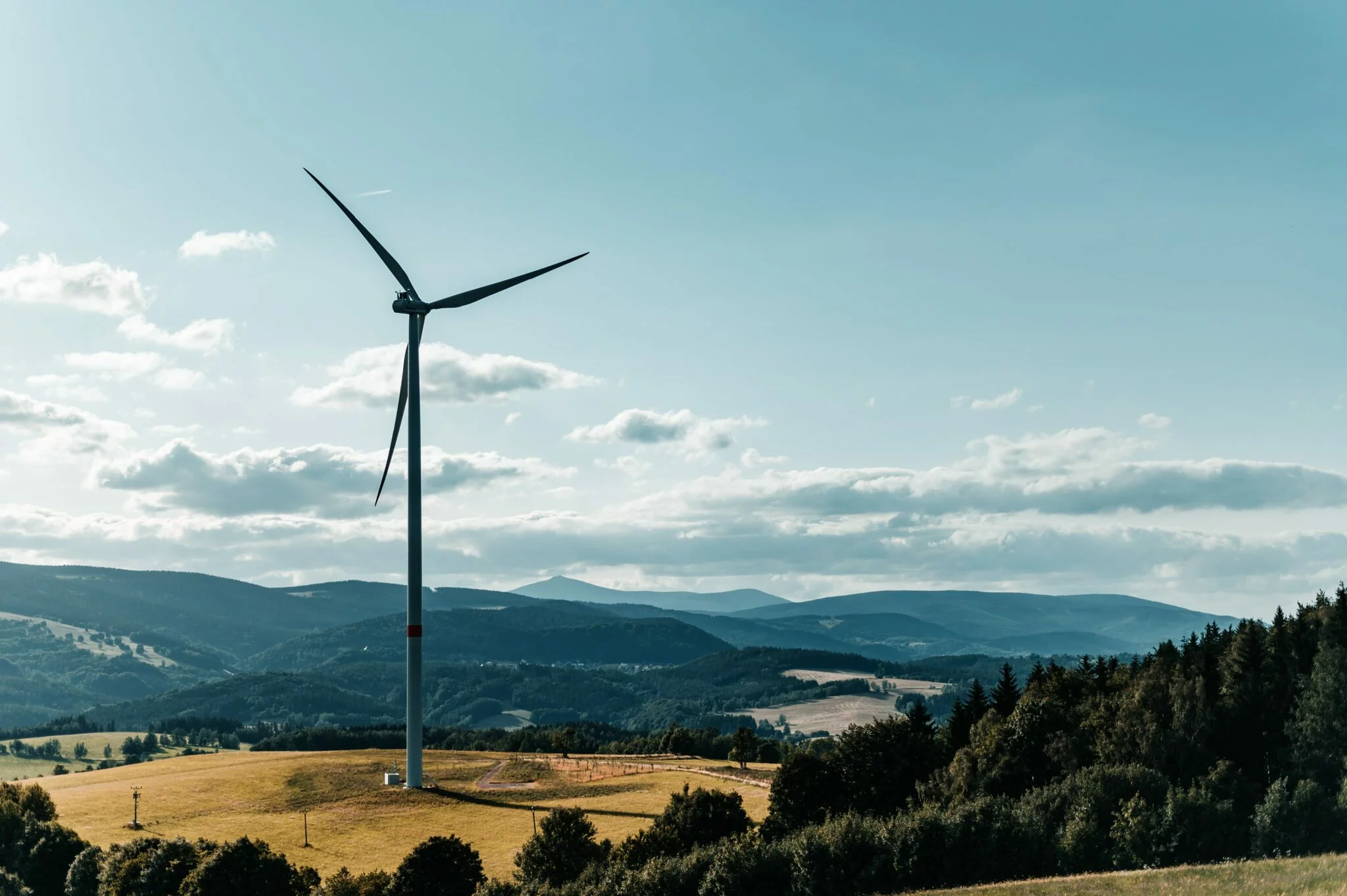The European Union (EU) and China announced sweeping plans this week to dramatically reduce greenhouse-gas emissions to slow the pace of climate change.
Many scientists say the warming climate is creating more hurricanes, floods, forest fires, and other events that threaten millions of people and the global economy. The EU and China represent two of the world’s biggest economic areas and largest emitters of greenhouse gas. Their plans, announced July 14, have been long under discussion and are expected to take years before they are fully implemented. But they are considered by many policy makers to be important steps to fight climate change, although some environmentalists say the proposals don’t go far enough.1
The newly announced plans illustrate European and Chinese leaders’ quest to be at the forefront of the fight against climate change just months before the next global climate-change conference in Scotland in November.2 That progress contrasts starkly with the U.S., where President Biden’s own ambitious climate plan faces stiff opposition, mostly from Republicans, in a divided Congress.3
The EU’s plan is dubbed the “European Green Deal.” It drastically limits the bloc’s reliance on fossil fuels and imposes taxes on imports from countries that emit high levels of greenhouse gases.1 The EU accounted for 6.4% of global greenhouse gas emissions in 2019, making it the world’s fourth-largest emitter behind China, the U.S., and India.4 Its share of global GDP was 17.9% in 2020.5 The EU wants to achieve zero net emissions by 2050.1
China’s climate plan focuses on the launch of an emissions-trading system for Chinese companies, which would create the largest carbon market in the world and sharply increase the country’s share of global emissions covered under similar types of programs. China, the world’s largest emitter, accounted for 27% of global greenhouse-gas emissions in 2019.4 Its share of global GDP was 17.4% in 2020.5 China’s plans will play a central role in helping it to achieve its previously stated aim of reaching net zero emissions by 2060.1
Winners and Losers
Both plans will have major impacts on global industries and the companies that operate within them. Fossil fuel companies are likely to be adverselyaffected, as well as exporters from high-emitting industries or countries. Major producers of carbon also will be affected, such as the steel, cement, and power industries. However, alternative energy companies, such as wind, solar, and hydro, are likely to benefit from the new initiatives, as well as companies producing more energy-efficient products, such as electric cars. Plans that involve building renewable- and efficient-energy infrastructure would also benefit the construction industry.
KEY TAKEAWAYS
- The EU and China unveiled new plans in mid-July to reduce greenhouse-gas emissions.
- The EU aims to reduce emissions by 55% compared to 1990 levels and reach net zero emissions by 2050.
- China’s goal is to reach peak emissions by 2030 and net zero by 2060.
- The EU’s plan is named the “European Green Deal” and includes proposals to reduce emissions, increase renewable energy and energy efficiency, and restore the natural environment.
- China’s plan involves the launch of its carbon emissions trading scheme this month, which will allow companies to purchase allowances if they want to boost carbon emissions.
What Are the EU’s and China’s New Climate Initiatives?
European Green Deal
The European Green Deal is outlined by the European Commission (EC), the EU’s politically independent executive branch. It is considered one of the most ambitious plans to date by any major economic power to reduce greenhouse-gas emissions. It outlines the bloc’s targets for emissions, renewable and efficient energy, green building renovations, and nature restoration. It also outlines expected economic benefits and aims for international cooperation.6
The EU wants to become the first climate neutral continent by 2050.6 To get there, it is pledging to achieve its goal of reducing emissions by at least 55% by 2030, as mentioned above. The EU already had reduced its emissions by 24% from 1990 levels by 2019.2 The EU plan highlighted specific goals related to transportation, including zero emissions from all new cars by 2035. Beginning in 2026, the EU will cover road transport under an emissions trading scheme (ETS), commonly called a “cap-and-trade program” in the U.S. The ETS will put a price on pollution and stimulate cleaner fuel use as well as investment in clean technologies. Carbon pricing for both the aviation and maritime sectors were also proposed.6
The EU is also proposing a mechanism aimed at preventing polluting companies from shifting production outside the EU in order to circumvent the bloc’s emission limits, then export back to the EU. The mechanism being proposed is a carbon tax imposed on imports from countries that have high greenhouse-gas emissions.6 The tax would be the first of its kind.1
The plan also would boost the bloc’s sources of renewable energy and overall energy efficiency. The goal is for the EU’s renewable sources of energy mix to reach 40% by 2030. Currently, renewables make up about 20% of the EU’s total energy mix.1 The EU also wants to reduce its overall energy consumption by improving energy efficiency. Its target is to achieve a 36% overall reduction in energy consumption by 2030. One specific proposal is to require member EU states to increase their use of renewable energy in heating and cooling by +1.1 percentage points each year until 2030.6
Other proposals include the creation of a new Social Climate Fund aimed at supporting EU citizens most affected or at risk. The fund would be used to renovate buildings, provide income support, and for other measures. The EU also wants to restore Europe’s forests, soils, wetlands, and peatlands, which would help to absorb CO2 and make the bloc more resilient to the effects of climate change. The EC says its new proposals could result in 35 million buildings renovated and 160,000 additional green jobs created in the construction sector by 2030.6
China’s National Carbon Market
China’s long-awaited national carbon ETS is expected to launch some time this month.7 China’s ETS would become the world’s largest carbon market by total volume. The intention is that the ETS will provide a market mechanism aimed at reducing emissions by enough so that total emissions peak by 2030 and the net zero target is reached by 2060.8
The ETS is being set up on the new Shanghai Environment and Energy Exchange, which was scheduled to open on July 16, 2021.9 The exchange will allow thousands of companies to purchase additional emissions allowances from other, more energy-efficient firms. The trading system will set a price on emissions and provide companies with the ability to purchase allowances if they find themselves in a position where they need to pollute more.8
In seven trial markets for the ETS, the average carbon price was around 40 yuan ($6.18) per tonne, which is cheaper than the average carbon price of 47.25 euros ($55.67) a tonne expected on the EU’s ETS from 2021 to 2025.8 Some firms have estimated that carbon prices may trade at around 40 yuan per tonne this year before rising to around 160 yuan in 2030.7
The first phase of the plan will cover 2,225 companies in China’s power generation sector. Those companies are responsible for more than 4 billion tonnes of carbon dioxide emissions each year, approximately 40% of the national total and about 14% of global energy-related emissions.7 The ETS will expand to other high-emissions industries over the next three to five years, including petrochemicals, chemicals, building materials, iron and steel, nonferrous metals, paper, and domestic aviation.1
The Bottom Line
What kind of impact the EU and China plans will have will depend on whether they will be implemented and how fast. The EU proposals still need to be approved by the 27-member states and EU parliament, and could take years of negotiations.2 China, controlled by the Communist Party for decades, has the ability to implement its plan faster. China’s ETS is expected to launch this month, but it still will take some time before its effectiveness is better understood.
Sources
- Wall Street Journal. “EU, China Unveil Sweeping Plans to Cut Greenhouse-Gas Emissions.” Accessed July 15, 2021.
- BBC News. “EU unveils sweeping climate change plan.” Accessed July 15, 2021.
- New York Times. “It’s Crunch Time and Biden’s Climate Gambit Faces Steep Hurdles.” Accessed July 15. 2021.
- CNBC. “China’s greenhouse gas emissions exceed those of U.S. and developed countries combined, report says.” Accessed July 14, 2021.
- The World Bank. “GDP (current US$).” Accessed July 14, 2021.
- The European Commission. “Delivering the European Green Deal.” Accessed July 15, 2021.
- South China Morning Post. “China’s carbon emissions trading scheme set to launch, with focus on accuracy of data.” Accessed July 15, 2021.
- Reuters. “Explainer: How will China’s new national carbon emissions trading scheme (ETS) work?” Accessed July 15, 2021.
- Reuters. “China to launch national ETS on July 16 -Shanghai exchange.” Accessed July 15, 2021.
This article was originally shared by Investopedia.






